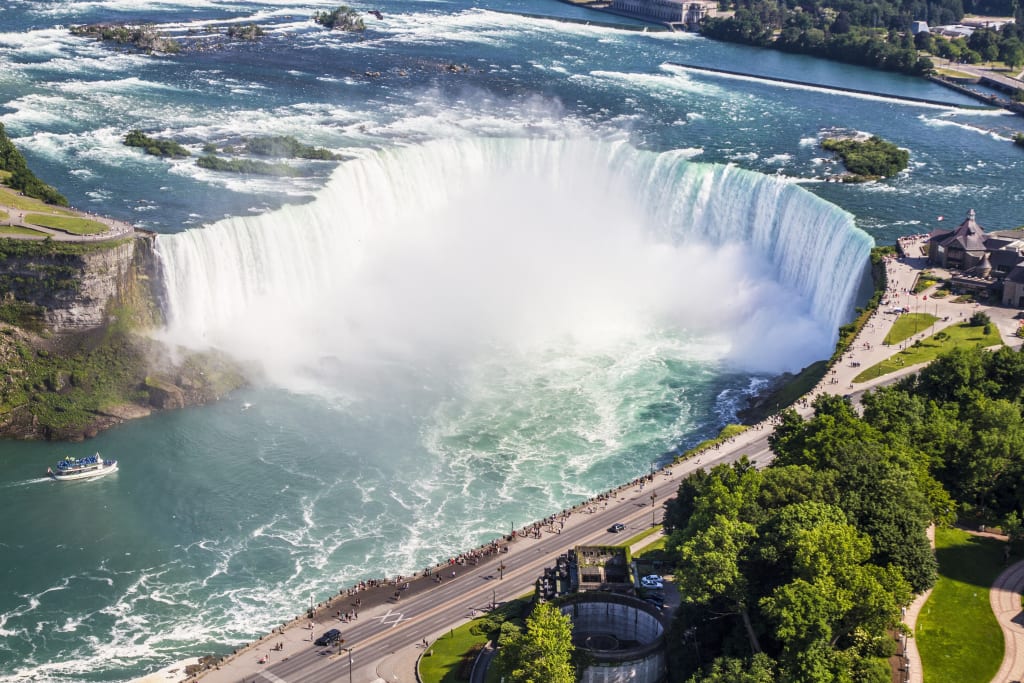When The Niagara Falls Stopped Flowing
A Tale of Engineering Marvels and Natural Wonders

The Niagara Falls are known as one of the world's most magnificent waterfalls, with millions of gallons of water cascading down every second. But in 1969, the unthinkable happened. The falls ran dry, leaving behind nothing but bare rocks and stunned tourists.
The reason for the dry spell was simple: engineers were attempting to study and repair the geological formations beneath the falls, and they needed to divert the water flow. They built a cofferdam, a temporary wall made of rock and steel, to block the river's flow above the falls. Once the dam was in place, the water was rerouted through a massive tunnel, which led to a hydroelectric plant downstream.
The damming of the river took several months, and during that time, visitors to the falls were greeted with a strange and eerie sight. Instead of thundering waterfalls, they saw vast expanses of exposed rocks and cliffs, many of which had never been seen by human eyes before. Tourists scrambled down the dry riverbed to snap photos and collect souvenirs, while scientists marveled at the geological formations that had been hidden beneath the falls for millennia.
The dry falls also had a profound impact on the local ecosystem. Fish populations were drastically reduced, and the exposed rocks became covered in algae and moss. But as soon as the cofferdam was removed and the water began flowing again, life returned to normal. The fish came back, the moss receded, and the thundering sound of the falls resumed.
Despite the temporary disruption, the dry spell of 1969 remains a memorable moment in the history of the Niagara Falls. It provided a rare glimpse into the geological wonders of the area, and reminded visitors of the power and majesty of nature.
After the initial shock and confusion, the residents and visitors of Niagara Falls began to realize the gravity of the situation. The mighty Niagara River had been reduced to a mere trickle, and the world-famous waterfalls had been silenced. For the first time in over 12,000 years, the falls were dry. People came from far and wide to witness this once-in-a-lifetime spectacle, walking on the riverbed and exploring the newly revealed geological formations. Many were left in awe of the raw power of nature and the sheer scale of the falls, even without water.
As it turned out, the reason for the sudden dry spell was a problem with one of the main diversion tunnels used by the Niagara Falls hydroelectric power plant. Workers had been doing routine maintenance on the tunnel, and during the work, a large rock fell and damaged the tunnel's lining. This caused an uncontrolled flow of water to escape the tunnel, leading to a significant reduction in the water flowing over the falls. It took several months of intense work and millions of dollars to repair the damage and restore the water flow to its former glory.
o restore the flow of water, the US Army Corps of Engineers decided to build a cofferdam upstream from the American Falls. This dam was made of rocks and debris and was built in just a matter of weeks. Once completed, the cofferdam diverted the flow of water away from the American Falls, exposing the dry riverbed below. The engineers then began a massive cleanup effort to remove the loose rocks and debris from the riverbed, which had accumulated over centuries. The cleanup effort took several months and required the use of heavy machinery and explosives to break up the larger boulders.
After the cleanup was complete, the engineers started to break down the cofferdam, allowing the water to flow back over the American Falls once again. The restoration of the falls was celebrated by tourists and locals alike, and the event was even commemorated with a special postage stamp. The dry spell had caused concern for many, but the successful restoration of the Niagara Falls served as a reminder of the power of nature and human engineering.
Today, the Niagara Falls continue to awe and inspire visitors from all over the world, and the dry spell of 1969 remains a unique and memorable chapter in its history.
About the Creator
Enjoyed the story? Support the Creator.
Subscribe for free to receive all their stories in your feed. You could also pledge your support or give them a one-off tip, letting them know you appreciate their work.





Comments
There are no comments for this story
Be the first to respond and start the conversation.